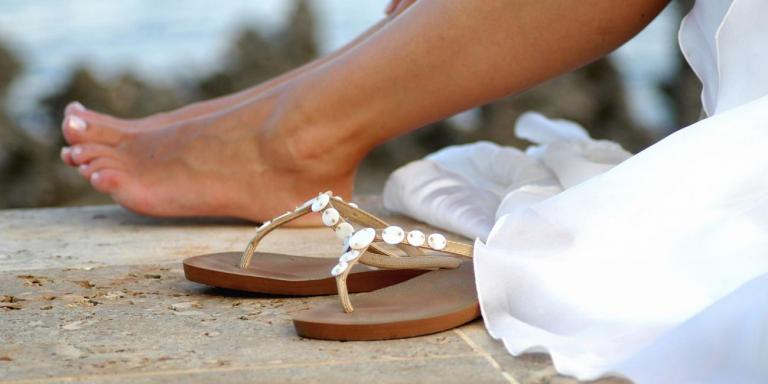I’m typing this with greasy fingers from the oil I’ve slathered onto my cracked heels. The fissures are an ugly sign left over from winter and intermittent care on my part.
I discovered I’d been neglecting my feet the night before in a yoga class, when my husband, taking the mat behind me, whispered, “Do you know how cracked your heels are?”
I blanched before dropping into a lunge (where I took a peek at the back of my feet), and realized that it had been a few weeks since I had moisturized them—maybe more. I’d been wearing heavy socks instead, waiting for spring to arrive.
Now I could see that my feet were far from sandal-ready.
From the ground up
After the heart, the feet are the hardest-working part of our bodies, logging on average 1,000 miles a year. Each step brings pressure nearly one-and-a-half times our body weight.
After squishing them into boots without any ventilation for several winter months, it’s essential feet get the attention they deserve.
Be kind to your feet
Drinking enough water every day will help boost your nails’ natural moisture and prevent them from becoming brittle. Try drinking at least eight glasses of water daily (tea counts too) to help transport essential nutrients to the nails. Since each foot contains about 250,000 sweat glands—capable of producing a pint of sweat daily—it’s crucial to keep your body hydrated.
Pamper your feet by soaking them in warm—not hot—water, making the skin pliable enough for scrubbing. Once your feet have soaked for 10 minutes, they’re ready for a scrub.
Choose products containing natural ingredients that promote circulation, such as peppermint, and exfoliants like fruit acids from pineapple or papaya. (Papaya contains the enzyme papain, touted as an alpha hydroxy acid substitute).
Fighting fungus
To fight fungus, look for foot scrubs that contain tea tree oil. A natural antifungal, tea tree oil can help prevent bacteria from getting inside your feet’s dry crevices.
Rub scrubs in with a circular motion, focusing on the most affected areas (usually the heels and any calluses that have formed alongside the big and pinky toes.) To accelerate the exfoliation process, try wetting a pumice stone and using it on your heels.
After rinsing, make sure your feet are dry in between the toes—that’s where the fungus known as athlete’s foot roams. Then slather feet with a cream containing nut-based emollients such as shea, almond, or cocoa butters.
Finally, envelop your feet in cotton socks for the night. By morning, the cream will be fully absorbed.
Shipshape
Me? I went for a heavy-duty treatment—opting to apply oil after scrubbing—to prevent those cracks on my heels from resembling tire treads. Avocado, jojoba, and neem oils provide healing and nourishment for truly battle-worn skin. And almond oil softens while conditioning both the cuticle and nail bed.
Apply oil liberally onto the cracked skin, rub it in, and then put on a pair of socks.

